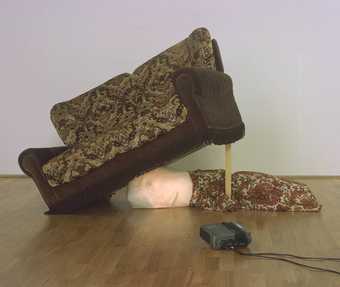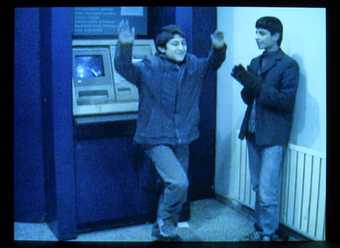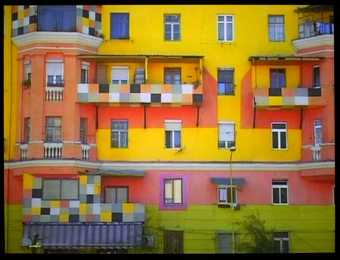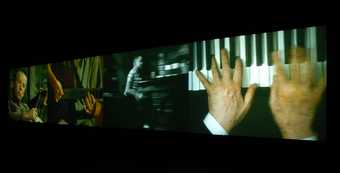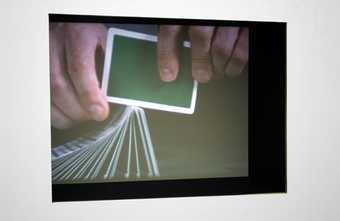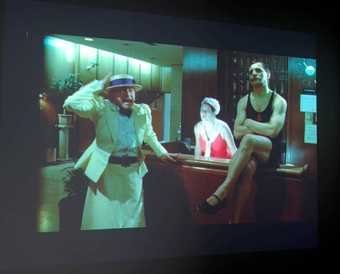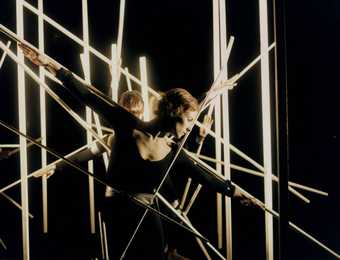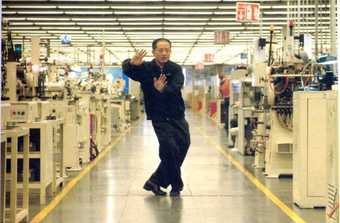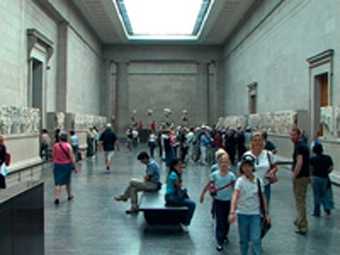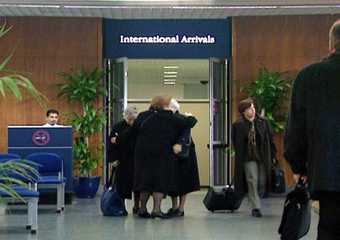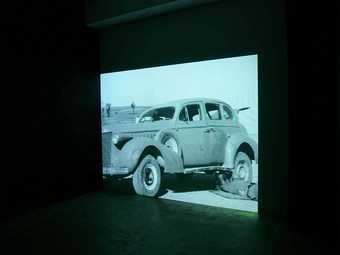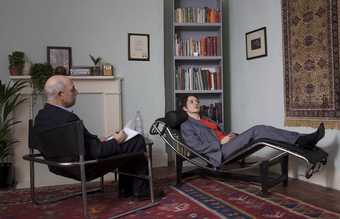Not on display
- Artist
- Christian Marclay born 1955
- Medium
- Video, projection, colour and sound (stereo)
- Dimensions
- Duration: 24hours
- Collection
- Tate
- Acquisition
- Purchased jointly by Tate, London with funds provided by the American Fund for the Tate Gallery; Centre Pompidou, Musée national d'art moderne, Paris; and The Israel Museum, Jerusalem 2012
- Reference
- T14038
Summary
The Clock is a video projection constructed out of moments from cinema when time is expressed or when a character interacts with a clock, watch or simply a particular time of day. Following several years of rigorous research and production, Marclay excerpted thousands of these fragments from films and edited them so that they flow in real time. The Clock premiered at White Cube, Mason’s Yard, London in October 2010. The video lasts 24 hours and functions as a working timepiece in itself, synchronised to the local time zone. While The Clock examines how time, plot and duration are depicted in cinema, the viewer can also look at the work at any moment and use it to tell the time. Yet the audience watching The Clock experiences a vast range of narratives, settings and moods within the space of a few minutes, making time unravel in countless directions at once. Even while The Clock tells the time, it ruptures any sense of chronological coherence. Drawing on strategies of avant-garde film and music, but using recognisable motifs from popular culture, Marclay at once defamiliarises and heightens the temporal experience of the cinema, transposing it into the direct, lived experience of any viewer who engages with the work.
The Clock plays with how audiences experience narrative in cinema, examining the conventions and devices through which filmmakers create a persuasive illusion of duration. When watching a film, an audience is removed from normal time and swept up in a new register that corresponds to the narrative at hand. The Clock transforms this condition of cinema: time, in this case, corresponds precisely to the actual time beyond the work. The audience experiences a fictional event, or countless events, at what appears to be the same time at which they are actually watching it in the gallery.
Further reading
Russell Ferguson (ed.), Douglas Kahn, Miwon Kwon and others, Christian Marclay, exhibition catalogue, UCLA Hammer Museum, Los Angeles 2003.
Jennifer Gonzalez, Kim Gordon and Matthew Higgs, Christian Marclay, London 2005.
Jean-Pierre Criqui, Christian Marclay Replay, exhibition catalogue, Musée de la Musique, Paris 2007.
Stuart Comer
January 2011
Does this text contain inaccurate information or language that you feel we should improve or change? We would like to hear from you.
You might like
-
Tony Oursler The Most Beautiful Thing I’ve Never Seen
1995 -
Gary Hill Remarks on Color
1994 -
Fikret Atay Rebels of the Dance
2002 -
Anri Sala Dammi i Colori
2003 -
Christian Marclay Video Quartet
2002 -
Daria Martin Closeup Gallery
2003 -
Catherine Sullivan The Chittendens: The Resuscitation of Uplifting
2005 -
Daria Martin Birds
2001 -
Daria Martin In the Palace
2000 -
Cao Fei Whose Utopia?
2006 -
Simon Martin Carlton
2006 -
Simon Martin Wednesday Afternoon
2005 -
Mark Wallinger Threshold to the Kingdom
2000 -
Akram Zaatari This Day
2003 -
Carey Young Product Recall
2007


